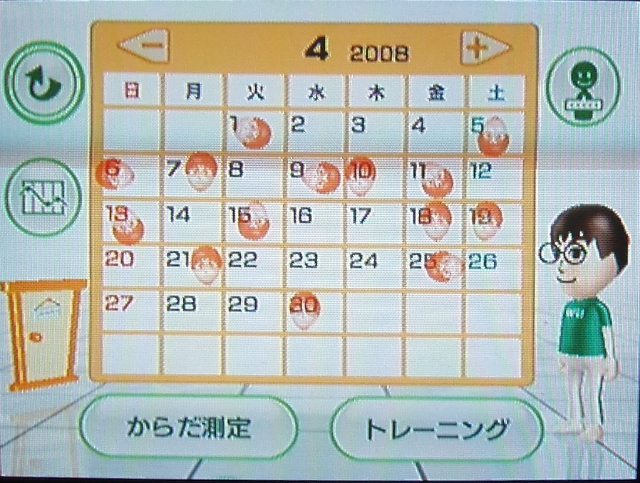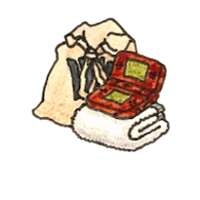
2024年1月7日
Exploring Onsen
with the Nintendo DS
Onsen Techo. I saw it at the used game store and it immediately grabbed my attention. Two things I love - onsen (Japanese hot spring baths), and techo (a journal or diary). It was a software title for the Nintendo DS, exclusive to Japan and relatively obscure. It describes itself as a guide to over 2000 onsen all over Japan, curated by onsen scholar Tadanori Matsuda. There were some indications that this might not be the highest quality DS title ever produced. The screenshots on the back cover didn’t inspire confidence, and it was being sold at the bargain-bin price of 108 yen (about $0.75 in the US). Shovelware, I thought. I left without buying the game.
But my interest was piqued. What would a digital hot spring journal look like? What could it look like? I imagined discovering and learning about various onsen and being inspired to plan trips to visit them. I imagined keeping an onsen journal, how I might log my onsen adventures with writing, drawing, and stamps, and I thought about what a digital version of that might look like. These thoughts excited me. Several days later, I went back and bought the game.

The "Game"
To be clear, though I refer to it as a “game” throughout this post, Onsen Techo is a software utility with no gameplay elements. It consists mainly of a digital database of onsen. Each onsen’s entry includes a photo and some basic details such as the address and phone number, spring water quality, amenities offered, prices, business hours, and a map. Onsen can be browsed in a number of different ways, such as by location, price, or water type. You can give each onsen either an “A”, “B”, or “C” bookmark (the game suggests using “A” for onsen you want to go to, “B” for onsen you’ve been to, etc.) and you can add text comments to your bookmarks.

The game’s top menu, with links to “Onsen Studies”, “Search”, “My Techo”, “Ekiben”, “Calculator”, and “Settings”
Besides the onsen database, there’s some general educational information about onsen, including information about the different spring water types, the various benefits of onsen, and various types of baths and ways to bathe. There’s also some information about ekiben (bento box meals you can buy at train stations), some basic settings, and a built-in calculator.
If you’re wondering why any of this exists and why it’s in the format of a video game, consider the fact that this game was released in 2007, the same year the iPhone was released and before the App Store existed. Consider also that the Nintendo DS family sold about 33 million units in Japan (source: Nintendo), a country with a population of about 126 million, and that a DS is essentially a pocket-sized computer with a handy touch screen interface. So if you wanted to make some kind of handy mobile software utility at that time, be it for fans of reading or cooking or onsen, the Nintendo DS with its sizable install base was a pretty logical platform to do it on.
The Plan
Having spent 108 of my hard-earned yen on this game, I wanted to explore everything it had to offer and get the complete experience. I navigated through every page of the user interface and got to know all of the features. I read some of the educational content and learned a bit about the different types of onsen water. I searched for and found some onsen I had been to in the past - Dogo Onsen, Oedo Onsen Monogatari, Yachigashira Onsen - and added them to my bookmarks and wrote some brief comments.

Bookmarking Yachigashira Onsen in Hakodate with the comment “I’ve been here”
But in order to get the complete experience, to truly be able to say I had “played” this game - “beaten” it, you could say - I had to use this game to find a new onsen and go there. Furthermore, I wanted to get the authentic 2007 experience by relying as much on this game and as little on my smartphone as possible.
I used the search-by-prefecture function to look up onsen around Tokyo. I found one about an hour away from me by train called Saya no Yudokoro.

The entry page for Saya no Yudokoro
The game’s entry described it as overflowing with a sense of peace, having an old-fashioned Showa (Japanese era ranging from 1926 to 1989) atmosphere, with pale green sodium-chloride water springing forth from 1500 meters below the earth, a rarity in the city. With the game only offering one very low-res photo to represent each onsen, the text description was doing a lot of the heavy lifting to paint a picture in my head. This description sold me, so after a quick Google search just to make sure the onsen still existed, I had my destination.
Getting Ready
Feeling newly excited about onsen, I felt like I might be visiting them more often from now on, so I decided to take this opportunity to prepare a handy onsen go-bag. I found an old tote and packed it with a fresh towel, a small “modesty towel” that you take into the bath with you, a waterproof pouch from MUJI packed with my hair and skin products, and a clean set of undergarments to change into after bathing. I also packed my Nintendo DSi LL with Onsen Techo and a couple other games for the train ride.

With my onsen bag packed and ready, I headed out.
The Onsen
Trying to navigate from the train station to the onsen relying solely on the map provided by the game - a simple static image showing nearby train stations and a few other landmarks - was an interesting challenge. How many years had it been since I last went somewhere new without confirming my every movement on Google Maps? When the glowing lantern at the front entrance of the onsen came into view, I felt a sense of accomplishment.

Saya no Yudokoro was lovely, one of the better onsen I’ve been to. The beautiful architecture and landscaping makes it really feel like an escape from the city. In the onsen area, a wide variety of baths were available - indoor and outdoor baths, jet stream baths, a throne-like bath with water running down your back and legs and pooling at your feet. There was a sauna in which you rub a kind of salt all over your body and then sweat it off, leaving your skin smooth. My favorite was an outdoor bath that you lay down on your back in, and the water is shallow enough that you’re just about halfway submerged. The hot spring water contrasted with the crisp winter night’s air felt fantastic.
In the relaxation room, where you can lounge on the tatami floor and nap or quietly read, I spent some more time with Onsen Techo, reading about the various benefits of different spring water types. Later I enjoyed a meal of kenchin udon and a seasonal dessert at the on-premises restaurant.

Fuyu no Irodori - “Colors of Winter” dessert. Matcha roll cake, ice cream, and mochi.
Impressions
Onsen Techo was a bit disappointing, only because I feel you can have a lot more fun with the concept of a digital onsen journal. The game provides you with a single content-neutral text box to (painstakingly) type out comments like “I want to go here” or “Visited this onsen, it was good!”. It’s not hard to think of ways to improve on this experience. If a simple “Want to go” checkbox, a “Visited!” stamp, and a star rating field were available, you would be saved from the pain of typing those words out on the clunky keyboard, and that information could be conveyed in a more fun and visual way.

Wii Fit Plus showing off the inherent joy of collecting stamps (source: NG Game Cats)
Rather than a single open-ended comment field, some simple prompts such as “What did you experience here? What did you like? What did you not like?” would’ve been fun to think about and reply to. And rather than text input, the ability to freely handwrite or draw would’ve been faster and would've allowed for more expression.
With all that said, I had an enjoyable day with Onsen Techo. I broke out of my tired daily routine and went somewhere new, a part of Tokyo I might never have otherwise visited. I got to enjoy new sights, tastes, and sensations. I learned some things about onsen I hadn’t known despite being a pretty seasoned onsen-goer. And I’m excited by the idea of expanding my bookmark list of onsen visited in the years to come. So the next time I’m in need of an adventure and a bath, I’ll have this game to turn to.

“2024/01/06: Went here! It was really good!”







